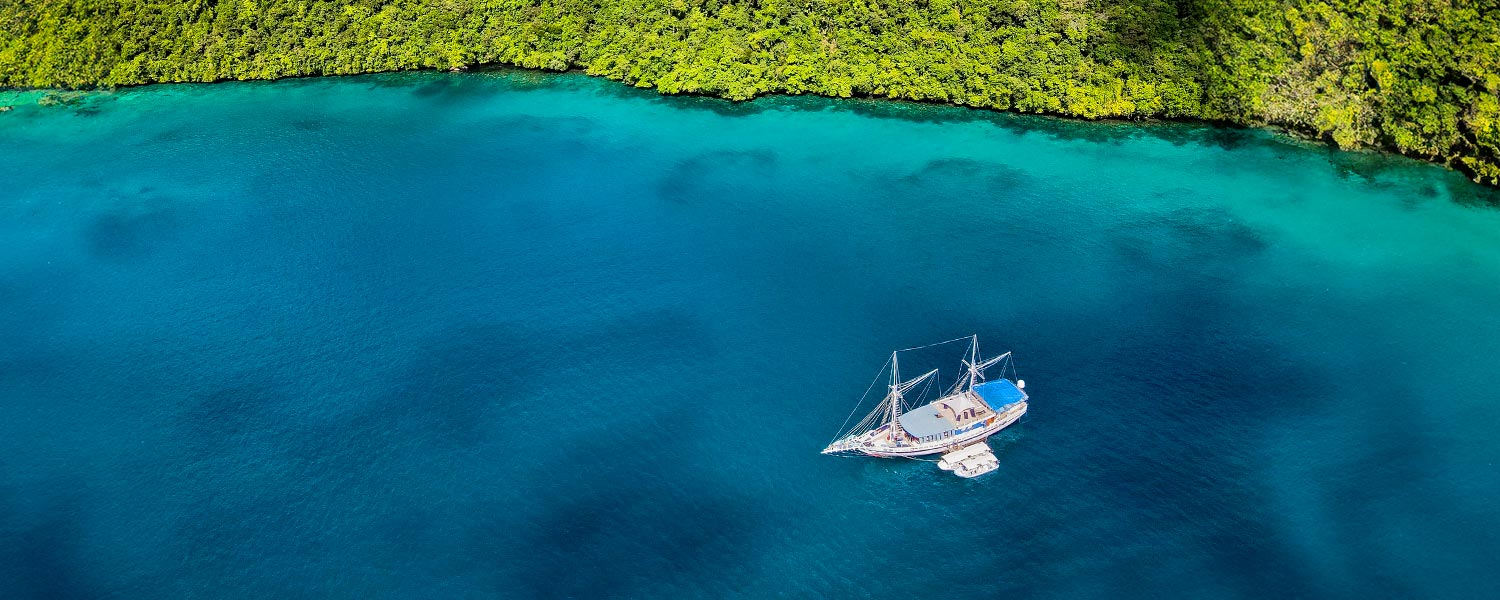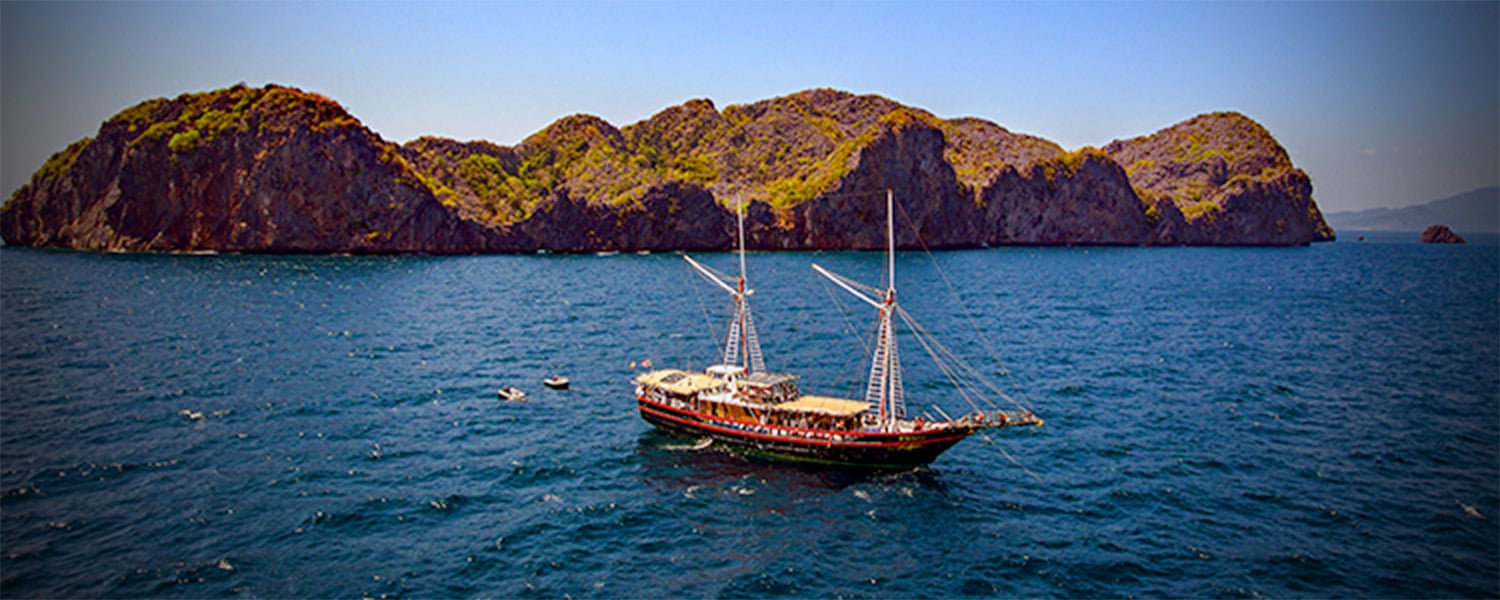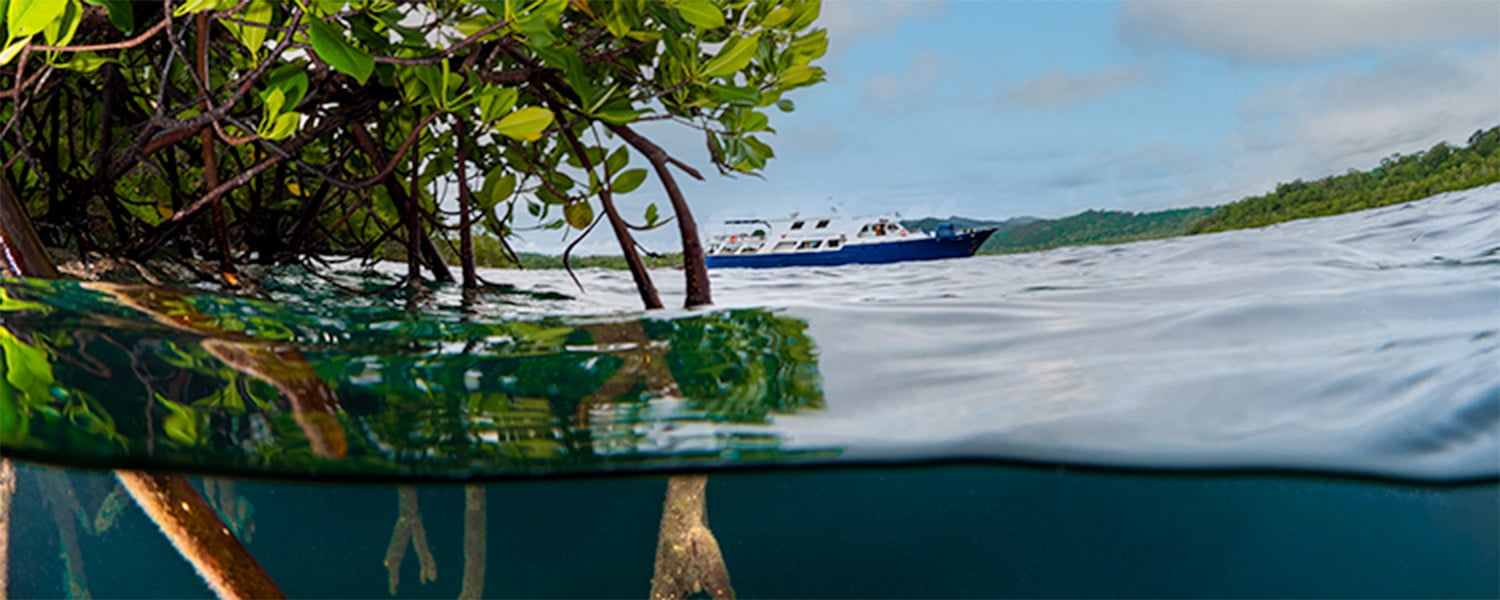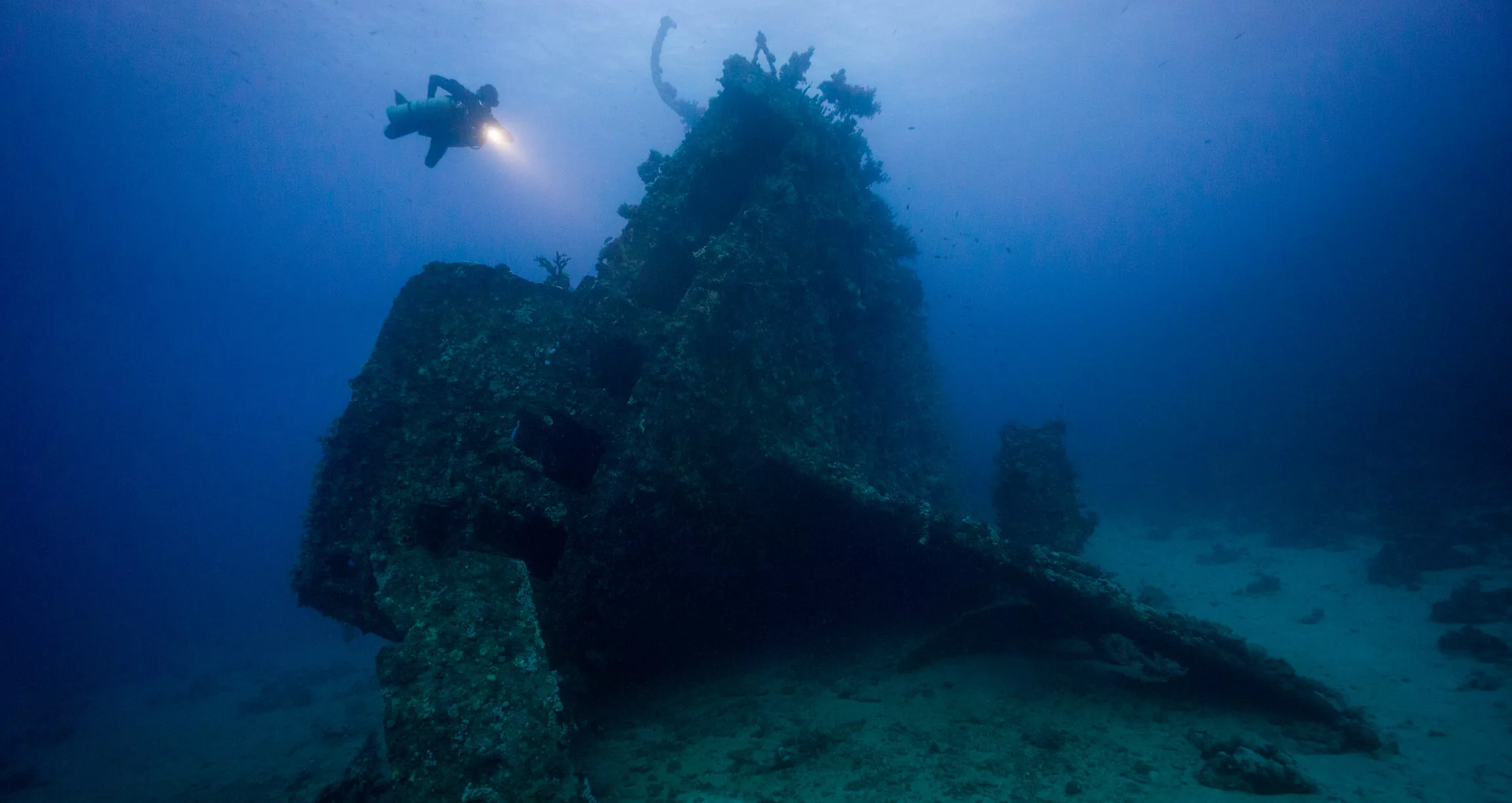Seeing a sea snake underwater is quite a sight. They are both relatively rare and majestic. On our Southern Forgotten Islands or Eastern Banda Sea itineraries you will visit dive sites such as Manuk and Gunung Api. These places are so pretty but what makes them extraordinary is the amount of Olive sea snakes you will encounter. We sometimes can see up to 20 individuals during one dive! But what are they? In this article, we will tell you all about these amazing snakes.
What are Olive sea snakes?
The Olive Sea Snake is perhaps the most common true sea snake in the tropical waters. It has other names such as golden sea snake or olive brown sea snake.
Appearance
The olive sea snake is a long sea snake with smooth scales and as a snake, they have no limbs. Their coloration can be variable but most have olive skin. We are sure you could have guessed this! 🙂 On the head, the scales are a darker brown while their back is normally paler. Some individuals though are a flat olive-grey across the entire body. The head is short and of equal width as the stocky body. Their eyes are small and the nostrils are valved, thus preventing water ingress. Their mouths feature the longest fangs of any sea snake.
AT the rear end, their tail is very particular with a flat end. It looks like a paddle or an oar. That flat tail, along with their compressed body, makes them excellent swimmers.
They can grow to lengths in excess of 2m (6ft) weigh up to 3kg (6.6lbs).
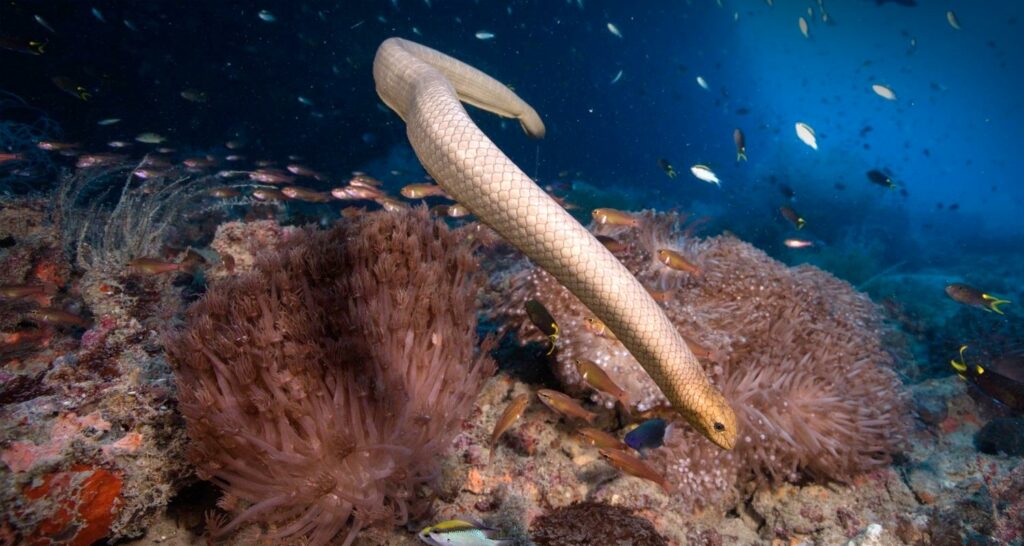
Diet
Olive sea snakes are carnivores. Their diet can include fish, eggs, crustaceans, and molluscs. Their prey is subdued using a potent venom. Once the venom is injected the snake will coil around the prey and hold it until it stops moving. The venom of the olive sea snake works on the muscles and nerves of their prey and begins to break down prey from the inside to assist with digestion. The venom is potentially lethal for humans if bitten.
Range
The Olive Sea Snake can be found in the Timor Sea, throughout the northern and north-eastern coasts of Australia, and in the Coral Sea and other areas south of Papua New Guinea.
Habitat
They make their home around coral reefs, estuaries and tropical shallows. They tend to be found in areas with a sea depth of 4-45m (13-147.6ft). They seem to favor more protected reef areas.
Reproduction
Breeding normally takes place between May and July. The entire life cycle of the olive sea snake takes place underwater. Mating occurs under water and lasts long enough that they need to surface to breathe during. The female will swim to the surface dragging the male with her as they go. Often several males will attempt to gain breeding rights with the same female.
As with all true sea snakes, live young are born at sea where females give birth underwater. They may have as many as 11 young though the average is 6. They will typically reproduce once every two years.
Young are darker in coloration than the adults and will lighten as they age. Sexual maturity is reached at 3 years old for males and 5 years old for females.
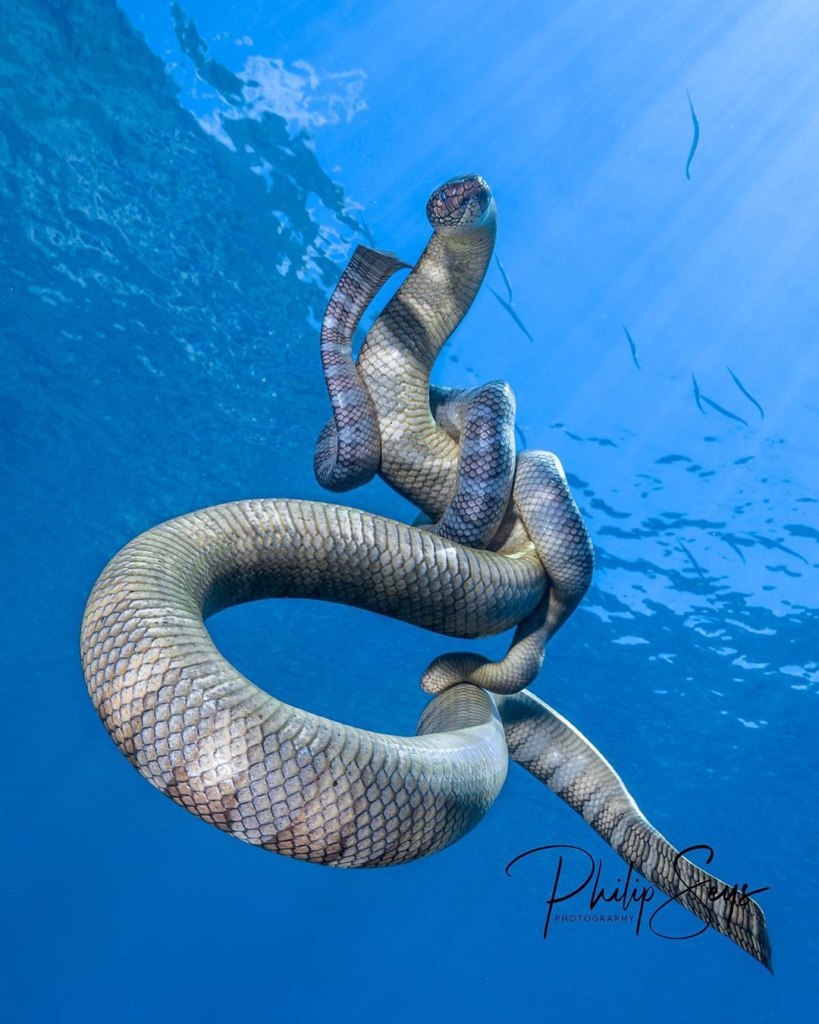
Behaviour
The Olive sea snake is active during the day and night alike. Hunting tends to occur at night when they will emerge from their hiding places. You will often see them at the surface as adults need to surface every half an hour to breathe fresh air. They can remain underwater for up to 2 hours if needed though. The entire life of the olive sea snake is spent underwater. Storms sometimes wash them ashore and this is often fatal for the snake.
Another particularity they have is that they are almost blind. They navigate detecting movement, so it’s not uncommon for them to follow the disturbance made by diver’s fins. They are also really inquisitive. We even had a guest on Indo Siren squeezing one snake between his fins once as the snake was very curious.
Olive sea snakes need to shed their skin throughout their life. This helps them to grow and also removes barnacles and algae from the skin. This is achieved by rubbing against coral or rock. Shedding occurs every two to six weeks which is more often than land snakes. Salt is excreted by a gland under the tongue to prevent excess salt accumulating in their body.
Predators & Threats
Predators include sharks and birds such as the osprey. Humans also affect their population by accidentally catching them in fishing nets. Habitat loss and degradation also threaten them.
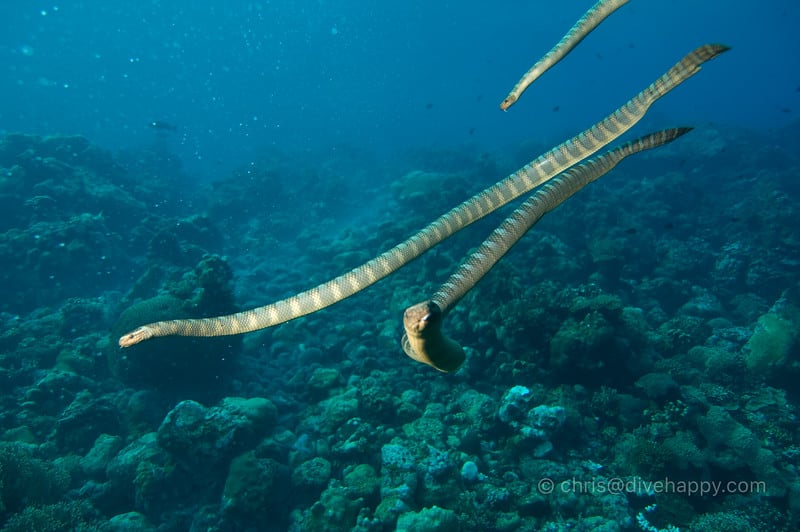
The best place to see Olive sea snakes
The best sites to see the Olive sea snakes in the Eastern Banda Sea are Gunung Api and Manuk (or Pulau Manoek).
Gunung Api
The name literally means fire mountain. As the name suggests, this is a small volcanic island. It lies 120 miles away from the nearest land mass in the Banda Sea. On the surface, the first weird thing you will see is the insane amount of birds, such as frigates. When we say insane, we mean it! The whole place actually carries a certain odor…
Underwater, it is a different story! You can easily do 2 to 3 dives on the island as the underwater topography is stunning. The whole island offers a variety of wall dives and some shallower sites. While on the walls, you may be able to spot large pelagics such as dogtooth tunas, rainbow runners, and sometimes scalloped hammerhead sharks or even silvertip sharks cruising the deep waters. But the attraction is in the shallower and more protected areas.
The coral bommies may not be the best you will see in Indonesia, but Gunung Api is famous for its population of Olive Sea snakes! It really is the place to be if you want to see them and you may be able to see up to 20 of them on a single dive. Truly an amazing experience.
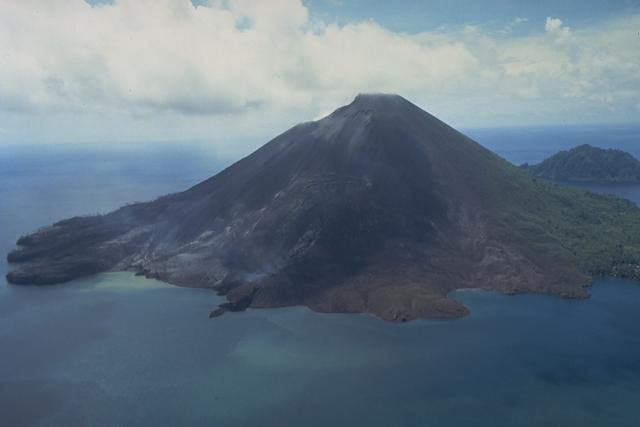
Manuk
Manuk (or Manoek or Manouk) is another tiny island in the middle of the Banda Sea. Again, we will normally spend 2 to 3 dives in the area as it offers a wide variety of dive topography. It is even more varied than Gunung Api. You can find walls, coral slopes, and sandy areas. Larger fish pass by on the outer walls including tunas and jacks. Smaller creatures can be found amidst the coral slopes and that includes – you will have guessed – a multitude of Olive sea snakes. It is an excellent site where we can witness the snakes hunting together. Again it is really common to end up diving with up to 20 of them.
How to dive with Olive sea snakes?
There is no special preparation entailed when diving with sea snakes. While their bites can be lethal to us humans, they are actually very peaceful creatures. We have never heard of a scuba diver being bitten by a snake in Indonesia. Diving with them is like any other dive really. We simply recommend not diving in shorties or shorts and have full exposure.
Best itineraries to see Olive sea snakes
The Southern Forgotten Islands
Our Indonesian Southern Forgotten Islands itinerary is one of our lesser-known itineraries. Starting in Alor (Kalabahi) and finishing in Saumlaki, you will explore several areas of the Banda Sea. This 12-night itinerary will take you to explore the world famous muck diving and the rich, colourful reefs of the Pantar Strait then out towards Saumlaki via the Banda Sea, diving at remote islands and pinnacles along the way. We recommend a minimum of 50 logged dives and AOW or equivalent for this trip.
We only run this itinerary once per year in September.
Eastern Banda Sea
The Eastern Banda Sea itinerary takes you on an exploration of the remote Eastern Banda Sea around Saumlaki. You will then journey towards Kaimana in Triton Bay following the Banda Arc.
The highlights of the Eastern Banda Sea are pristine reefs, steep walls. Muck diving with mandarin fish is a bonus. Hammerhead sharks sometimes visit the area and you can even see Chinese sea snakes in Manoek. In Triton bay, you can witness incredibly diverse and colourful soft corals reefs and if you’re lucky you might even spot an occasional whale shark.
During these itineraries we also offer interesting land excursions that include Banda Neira and the spectacular Sanggala Bay waterfall. You will need a minimum of 50 logged dives and AOW or equivalent to come and join us on this 12-night itinerary.
We only run this itinerary once per year towards the end of September to mid-October from Saumlaki to Kaimana.
